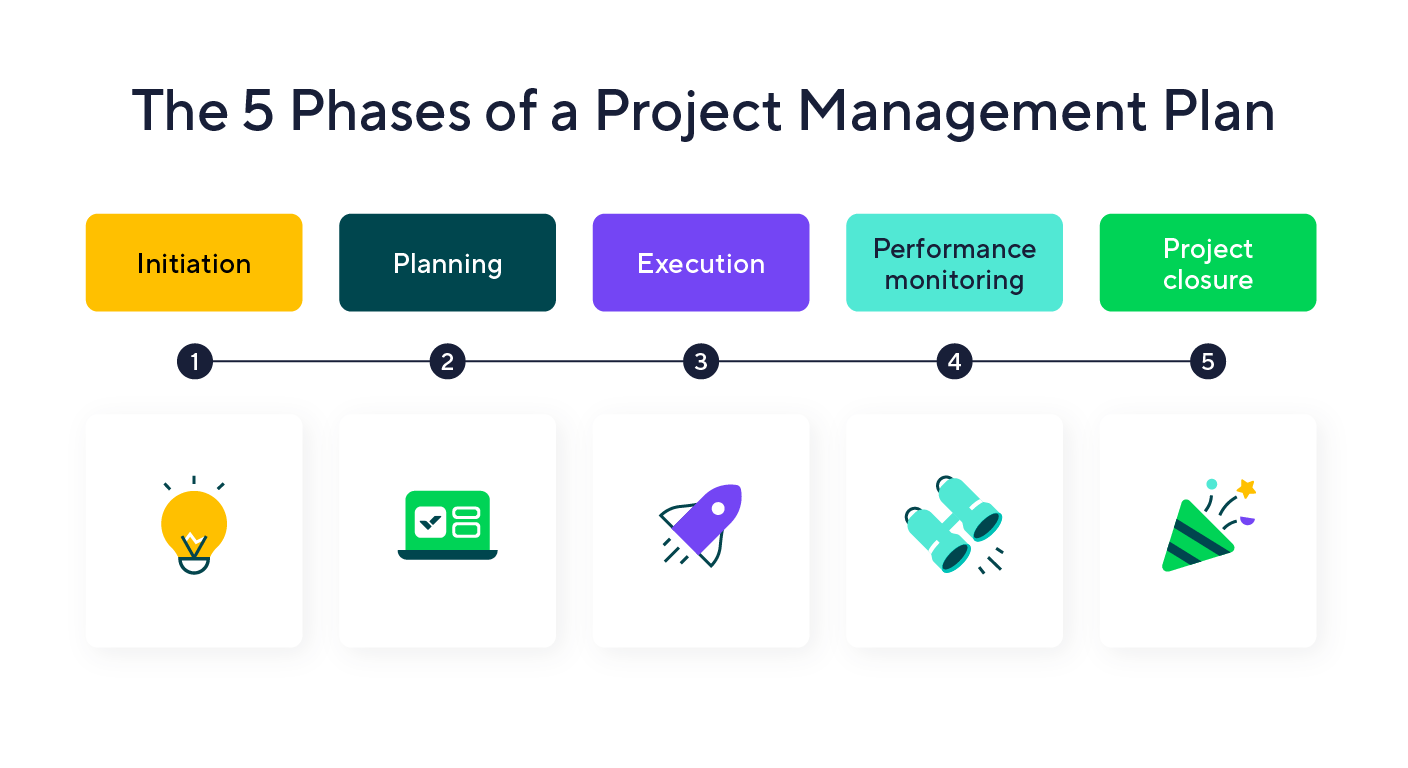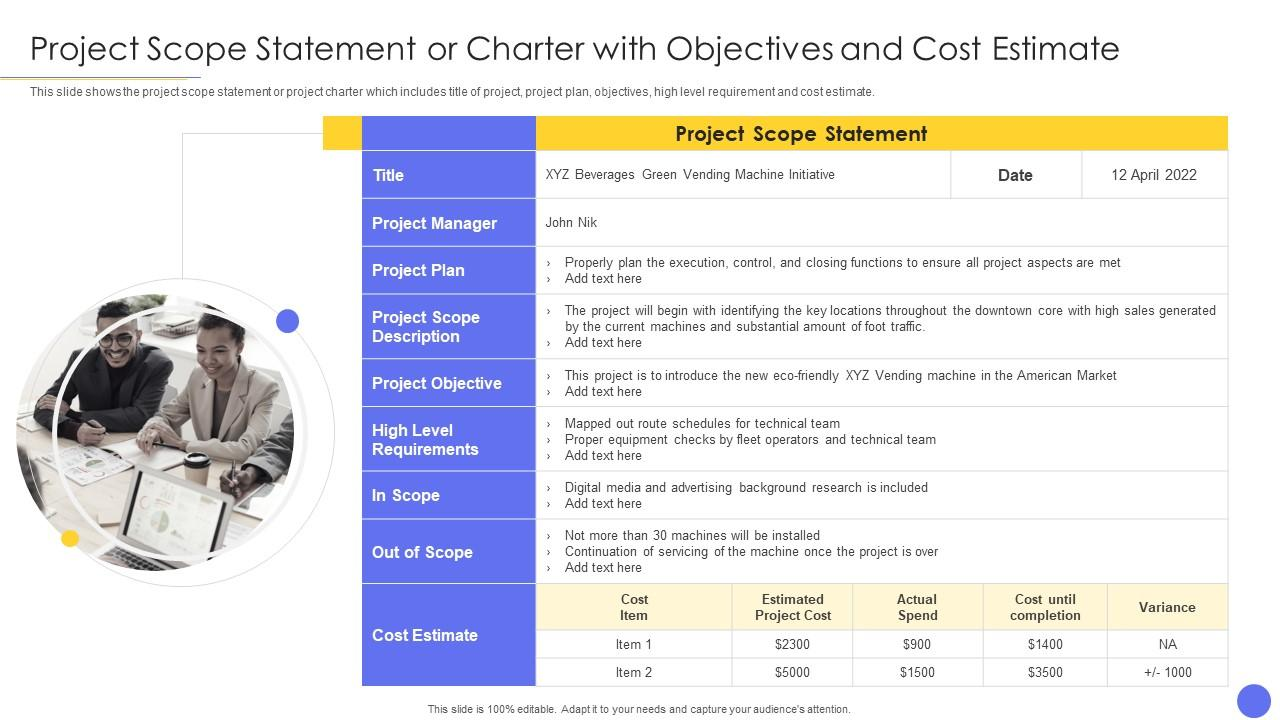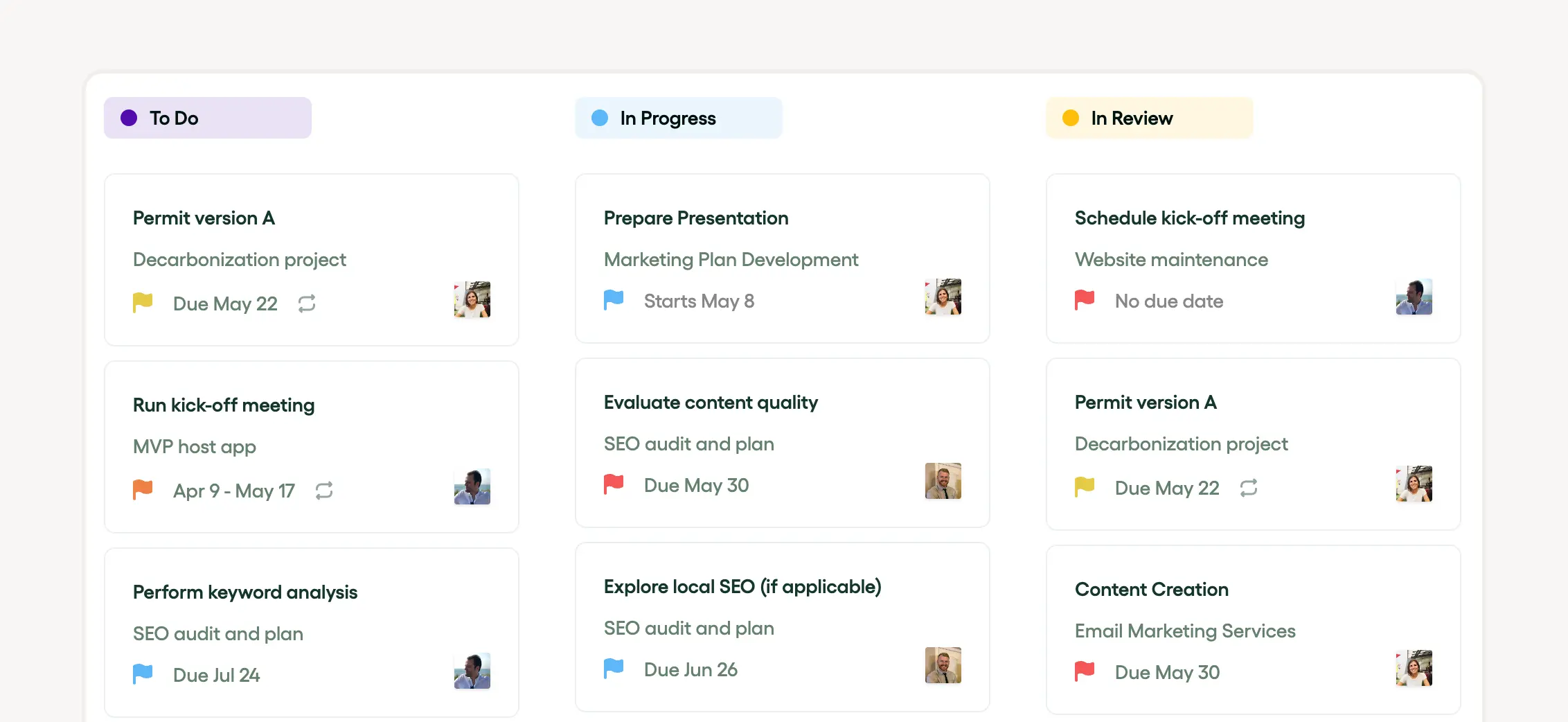Project management’s all about juggling a bunch of key docs. The project plan is the big kahuna that steers the ship, covering the must-dos, the when, and the who. It’s the playbook that keeps everyone in sync.
Then you’ve got the risk management doc, usually a risk register, that’s like your crystal ball for sniffing out trouble and dodging it. And don’t forget the project charter – it’s where you dive deep into the nitty-gritty of the business case, scope, and all the money talk.
Wrapping it up, the communication plan is your lifeline for keeping the info flowing during the hustle of project execution, making sure no one’s left in the dark and issues get tackled stat.
Understanding the importance of project management documents
Project management docs are the unsung heroes of any gig. We’re talking about the heavy hitters like the project charter, project plan, and the business case. These bad boys make planning a breeze, steer the project life cycle, and pump up your risk management game.
They’re the ones keeping records of everything from project scope to schedule, costs, and even how you chat. From kick-off to cost control, these papers are what keep the wheels turning smoothly, spotting risks and slapping on solutions pronto. So yeah, project docs are pretty much the backbone of nailing project management.
Role of documentation in successful project management
Project docs are the MVPs in the project management league, serving as your go-to reference from start to finish. Clear-cut docs like the project plan, schedule, and costs sharpen your planning skills, line up stakeholders, and keep risks on a tight leash.
With heavyweights like the project charter, business case, and scope statement, expectations get crystal clear, helping you manage those dollars like a pro. A solid risk register and communication plan are your secret weapons during the project execution phase, squashing potential probs and keeping the talk smooth. Bottom line: project docs are the pillars of project management.
Benefits of proper documentation for agencies
For agencies, good docs are worth their weight in gold. They’re your sidekick in risk management, keeping a clear log of all the boogeymen you might bump into. These papers beef up your planning by mapping out the project plan, schedule, and budget, which means smarter spending and resource juggling.
With Bonsai, all your important documents are neatly organized and easy to find. proper documentation in Bonsai is essential for agencies. When you've got a team working on different parts of a project, clear documentation is the glue that holds everything together. It ensures that everyone knows what's been done, what needs to be done, and who's doing what.

During the grind of project execution, solid docs lay out a strong business case, a full-fledged risk register, and a scope statement that doesn’t miss a beat. And that communication plan? It’s what keeps everyone in the loop, driving smart decisions and nailing project success.
Key project management documents
Nailing project management is all about having your doc ducks in a row. The project charter, business case, and scope statement are your project’s DNA, spelling out its purpose, the why, and the goals.
Then you’ve got the project plan that details the timeline, the risk register that’s all about dodging pitfalls, and the communication plan that keeps everyone talking. And when it comes to the moolah, the project costs and budget during the project execution phase are what keep your spending savvy and your project cost-effective.
Project Charter
So, the Project Charter is like the bedrock of your project plan. It lays out all the nitty-gritty details like costs, what we’re doing, and what we’re aiming for. It’s not just about the money; it’s about mapping out the whole journey, from the big idea to the nitty-gritty of the schedule, risk stuff, and how we’re gonna chat about it.
Keepin’ it real with cost and risk
It’s a big deal when it comes to handling the cash and dodging the pitfalls. This charter’s like your project’s GPS, guiding you from the get-go all the way to the finish line. And let’s be real, a well-baked charter means we’re gonna roll out this project smoothly and structured.
Project Management Plan

Here’s the deal with the project management plan: it’s the playbook that spells out every play from start to finish. We’re talking about a game plan that’s more than just dates and dollars—it's full money with strategies for keeping the budget in check and risks at bay.
Budget’s the boss
The budget’s the big boss here, setting the rules on what we can spend. It’s all backed up by a solid business case that’s part of the charter.
Work Breakdown Structure (WBS)
The Work Breakdown Structure (WBS) is your project’s blueprint. It breaks down the whole shebang into bite-sized tasks so the team knows exactly what to do to score those goals and deliver the goods.
Crafting the WBS
We cook up the WBS during the project, focusing on execution time. It’s all about making a clear plan, figuring out the dough we need, and managing costs and risks. This piece is key to the puzzle, linking back to the charter, the risk log, and how we keep everyone in the loop.
Scope Statement
Talking about the scope statement, it’s the chapter in your project book that outlines everything. It’s the guide that steers the whole project, detailing the timeline, the budget, and the costs.
Nailing the details
Costs and risks? They’re part of the territory. We’ve got the risk register on lock, and we’re crystal clear on how we’ll talk through the project. This scope statement? It’s the glue that holds the charter and the business case together.
Risk Management Plan
Alright, for risk management, you need a solid plan that covers all your bases—documentation, scope, you name it. We’ve got this risk register, which is basically our risk radar, keeping tabs on what could go sideways and how we’re tackling it.
Keeping it tight
It’s all about planning with precision and managing that budget like a pro. We’re here to protect the purse strings and keep any surprises during the project under control. So, it’s crucial this focus is baked into the charter and the business case from the word go.
Communication is key
And don’t forget, a top-notch communication plan is essential. It’s all about making sure everyone’s on the same page about the risks and how we’re handling them. It’s about keeping the team in the know and ready to roll with the punches.
Exploring project management software for document management
In order to manage your project seamlessly, it's important to have proper documentation. This includes understanding project visibility which is crucial for project success. Equipped with these tools, you are more likely to steer your project to completion efficiently.
Project Management Software simplifies the complexities of managing project documentation and becomes an indispensable tool in different phases of the project life cycle. It allows you to create a project plan, set up a project schedule, design a communication plan, prepare a project charter and even establish a risk register.
Each tool tends to have intuitive dashboards which give real-time insights into project costs, aiding in cost management. With functions to oversee risk management, you are always aware of where potential dangers lie. Project Management Software is versatile; it is used from the project planning phase till the project execution phase.
Bonsai: project management tools for implementation
Bonsai streamline your entire business for professional service providers, and small businesses in one platform. It's a project management tool that's all about making your work life easier. Imagine you're juggling a bunch of tasks, deadlines, and clients. Bonsai steps in to keep everything organized.
With Bonsai, you can create, send, and track professional-looking proposals, contracts, and invoices in no time. You can track your time, manage tasks, and even handle all your expenses in one place.
.webp)
The best part? It's really user-friendly. You don't need to be a tech wizard to figure it out. It's got a clean, simple interface that lets you see what's what at a glance. Plus, it's got this cool feature where you can see how much money you're making (or spending) on each project. It's like a reality check for your business.
So, if you're looking for a tool that helps you stay on top of your professional services, Bonsai could be your new best friend. It's all about making the business side of things a breeze, so you can focus on doing great work.
Microsoft Project: A comprehensive tool
Microsoft Project is a comprehensive tool that aids in project planning, cost management, and project execution phase. This software is designed to assist project managers in developing a compelling business case, a well-detailed project plan, and the crucial project charter.
Key features of this tool include the creation of a scope statement, establishing a project schedule, estimated project costs, risk register formulation, and the development of a communication plan.
With its dynamic project documentation capabilities, it guides you through the entire project life cycle efficiently, managing your project budget to ensure successful project outcomes.

Asana: Simplifying task management
Asana is a powerful tool designed to streamline project planning and management. It simplifies the creation of a project plan, enabling efficient determination of project schedule and budget. The platform aids in every stage of the project life cycle, from initially developing a project charter and a scope statement to managing project execution phase.
Incorporating Asana into your workflow ensures a clear communication plan among team members, allowing for effective cost management and risk management. Moreover, it serves as a reliable repository for all project documentation, including the business case and the risk register.
Trello: Visualizing project progress
Trello is an effective tool for visualizing progress throughout the project life cycle. It aids in project planning by portraying the project schedule in a user-friendly manner. Notably, the project documentation, project plan, and communication plan can be seamlessly coordinated and tracked using Trello.
Additionally, it can be used as a central hub for cost management, detailing project costs and tracking the project budget. This aids in maintaining transparency and facilitating decision-making during the project execution phase.
Risk management is another salient feature offered by Trello. With options to create a business case, risk register, and recording the scope statement, it ensures a comprehensive project charter in place.
Best practices for managing project documents
One of the best practices for managing project documents is maintaining an organized project documentation system. This includes documents such as the project charter, scope statement, and business case. Ensuring easy access and retrieval promotes transparency and helps in project planning and execution.
Keeping an up-to-date project schedule and project budget supports cost management and allows for better risk management. This information should be effectively communicated through a clear communication plan. Regularly updating the risk register as part of the project life cycle facilitates responses to unpredicted changes.
Finally, using a project management software system can streamline and automate these practices, ensuring all project documentation is in one centralized, accessible location.
Establishing a document management system
Establishing a Document Management System is critical for successful project execution. This system offers an efficient way to collate, access, and control all essential elements of a project, crucial within a project's life cycle.
These elements include:
- Project Plan: Outlining the course of action, objectives, and scope statement
- Project Schedule: Timeline for completion of the project steps
- Project Budget: Estimate of project costs and a tool for cost management
This system ensures that all project documentation remains organized, supporting effective communication and risk management throughout the project execution phase.
Ensuring document accessibility and security
Ensuring accessibility and security in project documentation is critical throughout the project life cycle. This involves a strict communication plan to protect sensitive information and to allow authorized personnel to access the required data. Access control mechanisms such as password protection and encryption can be utilized.
The project charter, project plan, and risk register are some of the key documents that need particular attention. Their accessibility should be well-regulated, considering the critical information they contain about the entire project schedule and budget. All these measures contribute to robust risk management, shielding the project from any unnecessary hindrances during the project execution phase.
Regularly updating and reviewing documents
The importance of regularly updating and reviewing documents during a project's life cycle cannot be overstated. This process involves controlling key components like the project plan, scope statement, and project budget. These are crucial elements of project documentation that require regular attention to ensure that the project is on track.
Moreover, it's also important to reevaluate the risk register and business case routinely as part of risk management. This guarantees that the project remains in alignment with the overarching company objectives.
Lastly, during the project execution phase, the project schedule and project costs need continuous monitoring and adjustment as necessary. This is key to cost management and setting up a clear communication plan.
Overcoming common challenges in project document management

Look, managing project docs is no walk in the park. You’ve got your project plan, schedule, and budget, and if they’re not on point, you’re in for a world of confusion.
Here’s the deal: You need a game plan that’s tight, communication that doesn’t miss a beat, and risk management that’s got your back. Tools that help with the money side of things, a risk register that’s fresher than your morning coffee, and a scope statement that everyone gets – that’s your ticket to nailing document management.
Dealing with information overload
When you’re buried in info during crunch time, it feels like a snowstorm of paperwork. But hey, you can totally handle it by:
- Keeping your eye on the prize: Sort those docs by how crucial they are to your project’s heartbeat.
- Better communication strategy: Keep everyone in the loop with updates that cut through the noise about schedules, costs, and plans.
- Use all the tools: Get your hands on some project management gadgets that keep tasks and deadlines in check, and even whip up a project charter.
Ensuring consistency in documentation
Consistency is king in the doc world, all through your project’s journey. It’s what keeps your communication clear, risks managed, and costs in line.

Stick to the script: Your project plan, schedule, and budget need to be in harmony. During the action phase, your risk register and project charter need to be spot-on. Plan like a pro and build a business case that stands tall.
Managing document version control
Keeping tabs on your docs’ versions is crucial. It’s like having a diary of all the tweaks and changes, so everything stays orderly.
Keep it tight: Track every edit to your project plan, scope statement, and risk register. When you’re in the thick of it, staying on top of versions is key to dodging risks and managing your budget. Log it right: Make sure every version of your docs is easy to find and up-to-date. It’ll make your communication smooth and your business case look sharp.
Conclusion: The power of effective document management in projects
Wrapping it up, solid document management is the backbone of your project planning. It shapes your plan, schedule, and budget, and keeps the money and risks in check for a smooth ride.
Bottom line: Stay on top of your docs like the project charter, business case, risk register, scope statement, and costs. It’ll boost your chances of success and save you from headaches and costly slip-ups.







